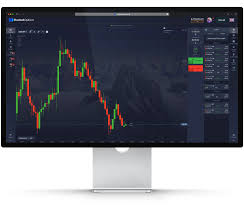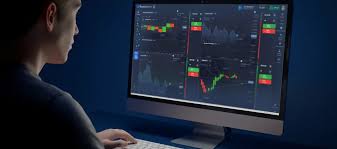
Pocket Option Schedule: Understanding the Trading Hours
In the world of online trading, knowing the market hours is crucial for maximizing your trading potential. The Pocket Option Schedule Pocket Option horario provides traders with essential information about the best times to buy and sell assets, ensuring that they capture opportunities in the market efficiently. In this article, we will break down the Pocket Option Schedule, explaining key trading hours, the significance of timing in trading, and how to leverage this knowledge for success.
Understanding Pocket Option
Pocket Option is a trading platform that offers binary options trading, covering a wide range of assets including forex, cryptocurrencies, commodities, and stocks. Its user-friendly interface and responsive design make it a popular choice among both beginner and experienced traders. With a focus on providing traders with the tools they need, Pocket Option offers an array of educational resources, technical analysis tools, and a demo account for practice.

The Importance of Trading Schedule
In trading, understanding market hours is not just about knowing when to trade; it’s about understanding market behavior during those hours. Different assets behave differently depending on the time of day, influenced by factors such as market opens and closes, economic data releases, and geopolitical events.
The Pocket Option Schedule provides a clear structure that guides traders on when to position themselves. It helps in identifying peak trading times, determining volatility levels, and recognizing when to avoid trading due to possible low volumes or erratic price movements.
Trading Sessions Explained
The global financial markets operate across four major trading sessions: the Asian, European, North American, and Pacific sessions. Each session has its own characteristics and ideal trading times:
- Asian Session: Generally runs from 11 PM to 8 AM GMT. It is known for lower volatility and smaller price movements, making it suitable for traders who prefer a slower pace.
- European Session: Opens at 7 AM GMT and closes at 4 PM GMT. This is one of the most active trading periods, especially when it overlaps with the North American session, resulting in higher volatility.
- North American Session: Runs from 1 PM to 10 PM GMT. This session sees increased trading volume and volatility, particularly when the U.S. market is active.
- Pacific Session: Operates from 10 PM to 7 AM GMT. This session often combines with the Asian session, exhibiting similar low volatility.

Maximizing Trading Opportunities with Pocket Option Schedule
To take full advantage of the Pocket Option Schedule, traders should consider the following strategies:
- Identify Peak Trading Times: Focus on hours when multiple markets are open, especially during the overlap of the European and North American sessions. This is often where the best opportunities arise due to increased liquidity.
- Stay Informed: Keep track of crucial economic events, announcements, and geopolitical developments that can affect market behavior. Use an economic calendar to anticipate potential trading opportunities.
- Leverage Technical Analysis: Use chart patterns and indicators to identify trends and entry/exit points. Timing your trades with the help of technical analysis can boost your success rate.
- Practice Risk Management: Always set stop-loss and take-profit levels to safeguard your capital. Knowing when to enter and exit a trade is as important as knowing the optimal trading hours.
Additional Considerations
While the trading schedule provides a structured approach, it’s essential to be adaptable. Markets can be influenced by unexpected events. Maintaining flexibility in your trading strategy will help manage risks effectively. Furthermore, utilizing demo accounts on Pocket Option can allow you to practice timing your trades without risking actual capital.
Conclusion
Understanding the Pocket Option Schedule is vital for any trader looking to maximize their profits and manage risks effectively. By being aware of market hours, recognizing the importance of different trading sessions, and employing strategic analysis, traders can position themselves advantageously. As the trading landscape continues to evolve, staying informed and adaptable is key to success.


